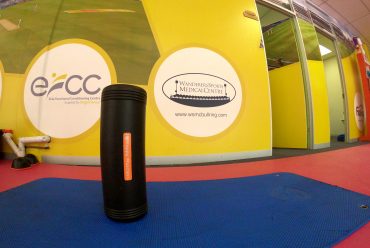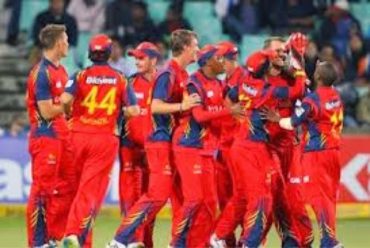Lower Back Injury Terminology
Stress fracture of the Pars Interarticularis:
Clinical features:
The patient complains of:
- unilateral low back ache, occasionally associated with buttock pain
- pain that is aggravated by movements involving lumbar extension, the
athlete may describe a episode of hyper extension that precipitated the pain.
Occasionally, stress fractures to the pars Interarticularis are asymptomatic.
On Examintaion:
- pain is produced on extension with rotation and on extension while standing on the affected leg
- the athlete may often have an excessive lordotic posture with associated spasm of the hamstring muscles
- palpation reveals unilateral tenderness over the site of the fracture.
Spondylolysis:
Or stress fracture at the Pars Interarticularis is seen in sports involving repeated hyper extension plus or minus rotation, such as fast bowling.
Spondylolisthesis:
Refers to the slipping of part or all of one vertebra forward on another. The term is derived from the Greek spondylos, meaning vertebra, and olisthanein, meaning to slip or slide down a slippery path. It is often associated with bilateral pars interarticularis defects that usually develop in early childhood.
Bowling Actions:
Side on:
The side-on technique is typically characterised by a low run-up speed, rear-foot positioned parallel with the popping crease, and a shoulder alignment at rear-foot strike that points down the wicket towards the batter approximately 180 degrees (shoulder segment angle) (Bartlett et al., 1996). Thus, the fast bowler has the appearance of bowling ‘side-on’ as they begins the delivery stride, with the left hip and shoulder (for a right hand bowler) pointing towards the batter. A recent classification of bowling actions (Portus et al., 2004) describes the side-on action as “a shoulder segment angle less than 210 degrees at back foot contact, a hip-shoulder separation angle less than 30 degrees at back foot contact, and, shoulder counter-rotation less than 30 degrees (Portus et al., 2004). A key feature of a side-on delivery is that the lumbar spine is subject to less rotation when compared with other actions. The side-on action while being the most ‘traditional’ action is now considered to be extremely rare in modern day fast bowlers (Ferdinands et al., 2010; Ranson et al., 2008).
Semi:
This sub-classification is relatively new and was advocated as a safe technique by the Australian Cricket Board as recently as 1998 (Portus et al., 2004). In this action the shoulder segment angle lies between the front-on and side-on actions. Similar to both the side-on and front-on actions, there is little to no counter-rotation of the shoulders. It is described as “a shoulder segment angle from 210 to 240 degrees at back foot contact,
a hip-shoulder separation angle less than 30 degrees at back foot contact, and, shoulder counter-rotation less than 30 degrees "( Portus et al., 2004).
Front on:
The front-on action, made famous by the West Indian pace bowlers throughout the 1970s and 1980s (Hardcastle, 1991), has been adopted widely in the modern game (Ferdinands et al., 2009). In a front-on action, the bowler’s hips and shoulders are open prior to delivery, giving the appearance of the
bowler running straight towards the batter. This action is described as “having a shoulder segment angle greater than 240 degrees at back foot
contact, a hip-shoulder separation angle less than 30 degrees. at back foot
contact, and, shoulder counter-rotation less than 30degrees ” (Portus et al., 2004). As with the side-on action, the degree of rotation of the lumbar spine is less than in other actions.
Mixed action:
The mixed action is a combination of both the front-on and side-on bowling actions, therefore the exact technique can vary. For instance,when the back foot makes contact, the hips and lower limb can adopt an orientation consistent with a side-on action whereas the shoulders face front-on to the batter, but the opposite of this can also occur. The mixed action is defined
as any action with “a hip-shoulder separation angle equal to or greater than 30 degrees at back foot contact, or, shoulder counter-rotation
equal to or greater than 30 degrees ” (Portus et al., 2004). Recent studies
(Ferdinands et al., 2010; Ranson et al., 2008) employing more specific classification methods, have identified that this action is the most prominent in professional adult bowlers from England, Australia and New Zealand (Ferdinands et al., 2010; Portus et al.,2004; Ranson et al., 2008).
Contributors to injury:
Weight:
A body's relative mass or the quantity of matter contained by it, giving rise to a downward force; the heaviness of a person or thing.
Skinfolds:
Many athletes attempt to alter their body weight composition, either by trying to put on weight ( in the form of muscle) or by losing weight ( in the form of fat). Certain sports require athletes to have large amounts of muscle mass. Some sports require athletes to be a particular weight to compete. There accurate assessments of body composition is necessary in certain athletes.
Sum of 7 skinfolds:
The body fat measurements of 7 areas of the body are measured using calipers:
- Tricpes
- Subscapular
- Biceps
- Supraspinale
- Abdomen
- Anterior thigh - quadriceps
- Medial Calf
Ground reaction forces (GRFs):
In physics, and in particular in biomechanics, the ground reaction force (GRF) is the force exerted by the ground on a body in contact with it. For example, a person standing motionless on the ground exerts a contact force on it (equal to the person's weight) and at the same time an equal and opposite ground reaction force is exerted by the ground on the person. GRFs, occurs when a fast bowler pounds his front foot into the ground, up to 9times his body weight. Imagine the force that goes through his front ankle, knee, hip and lower back.
Weight, Skinfolds , GRFs, a poor bowling action, and high workloads do the math.......
@Craig_gov
Craig Govender Physiotherapy @ The Bullring






